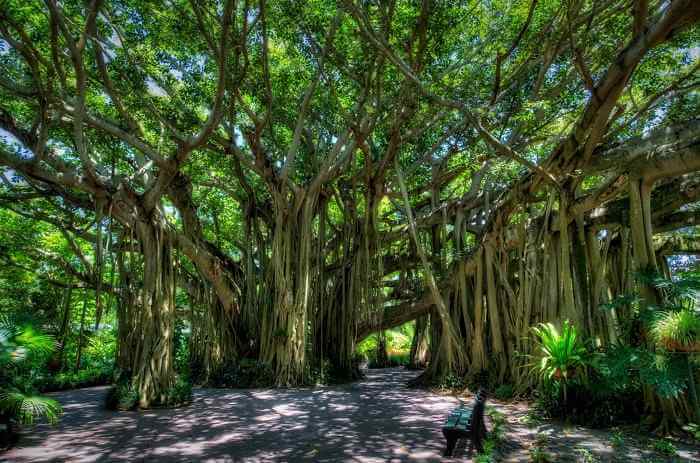National Tree of India | RRB NTPC
National Tree of India
The national tree of a country is one of the symbols of pride that is integral to the nation’s identity. Indian fig tree, also known as Banyan tree (Ficus bengalensis) is the National tree of India, whose branches root themselves like new trees over a large area. The tree is revered as sacred in Hindu philosophy. The roots then give rise to more trunks and branches. Because of this characteristic and its longevity, this tree is considered immortal and is an integral part of the myths and legends of India. The tree is often symbol of the fabled 'Kalpa Vriksha' or the 'Tree of Wish Fullfillment' as it is associated with longevity and has important medicinal properties. For centuries the banyan tree has been a central point for the village communities of India. Even today, the banyan tree is the focal point of village life and the village council meets under the shade of this tree. Being native to that country adds to the privileged status of the tree to be considered as a national symbol.
National Tree of India: Overview
| Kingdom | Plantae |
| Division | Magnoliophyta |
| Class | Magnoliopsida |
| Order | Urticales |
| Family | Moraceae |
| Genus | Ficus |
| Species | Ficus benghalensis |
National Tree of India: Indian Banyan (Ficus bengalensis)

National Tree of India: Importance
➤ In Hindu religion, the banyan tree is considered sacred and is called “Ashwath Vriksha” (“I am Banyan tree among trees”- Bhagavad Gita). It represents eternal life because of its seemingly ever-expanding branches.
➤ The banyan tree is also called kalpavriksha meaning ‘wish fulfilling divine tree’.
➤ The banyan is part of the coat of arms of Indonesia. It is meant to symbolize the unity of Indonesia: one country with many far-flung roots.
➤ Brian Aldiss, in his novel Hothouse, describes a future Earth where a single huge banyan covers half of the globe, due to the fact that individual trees discover the ability to join together, as well as drop adventitious roots.
➤ Ta Prohm in the Ankor Wat temple complex is well known for the giant banyans that grow up, around and through its walls.
➤ Older banyan trees are characterized by their aerial prop roots which grow into thick woody trunks which, with age, can become indistinguishable from the main trunk.
➤ Old trees can spread out laterally using these prop roots to cover a wide area.
➤ The largest such tree is now found in Kolkata in India. One famous banyan tree was planted in 1873 in Lahaina’s Courthouse Square in Hawaii and has grown to now cover two-thirds of an acre.
Comments
Post a Comment